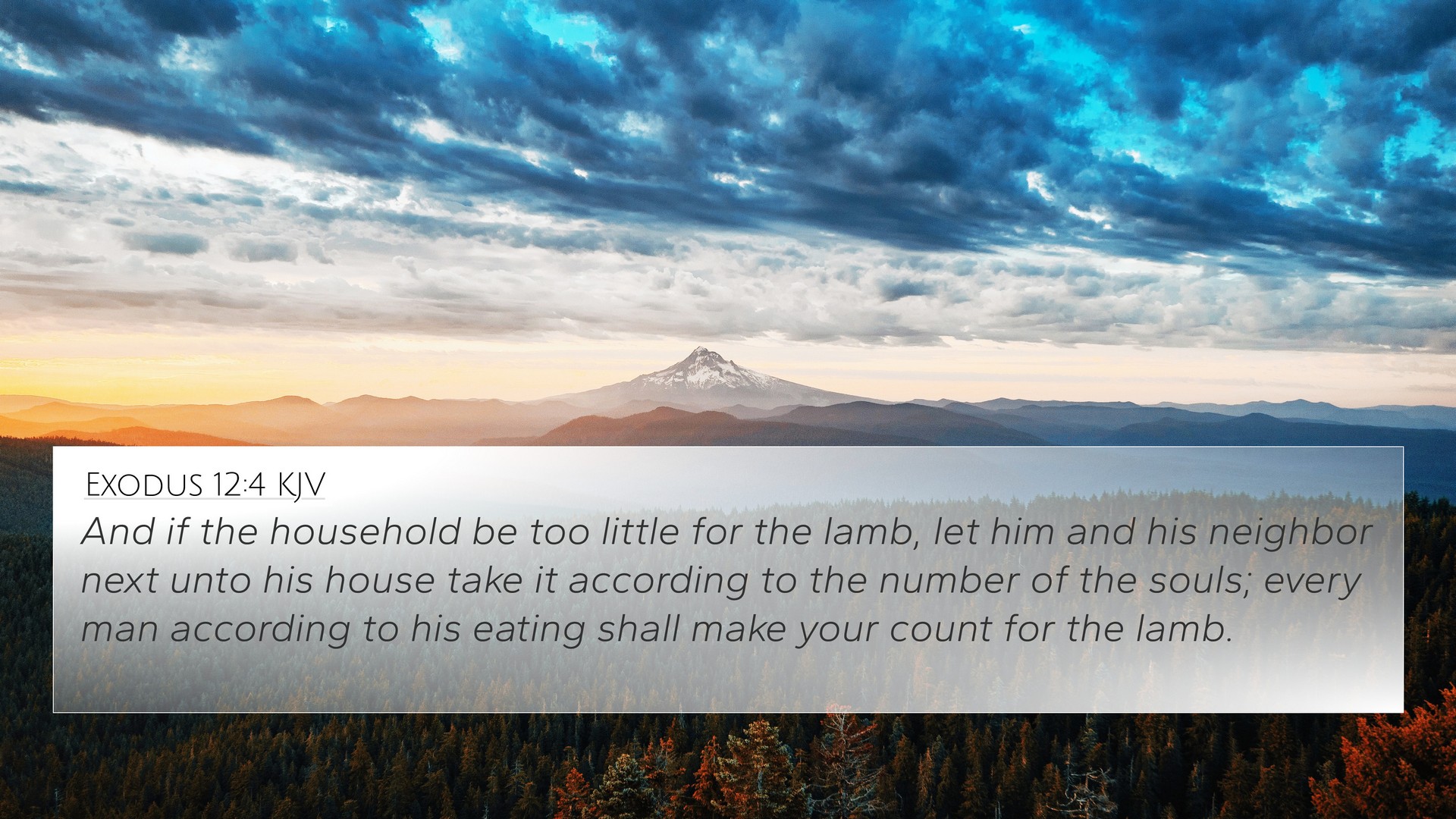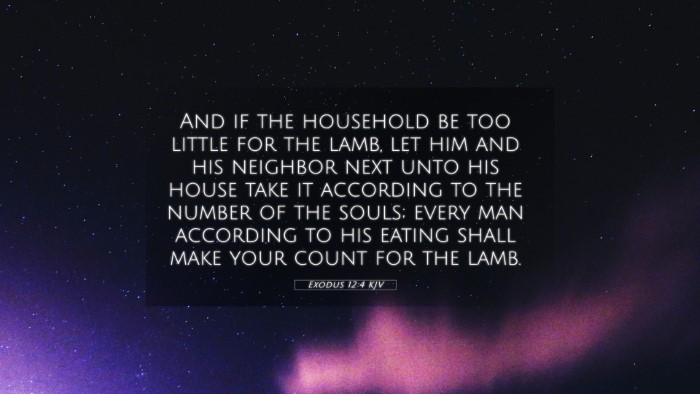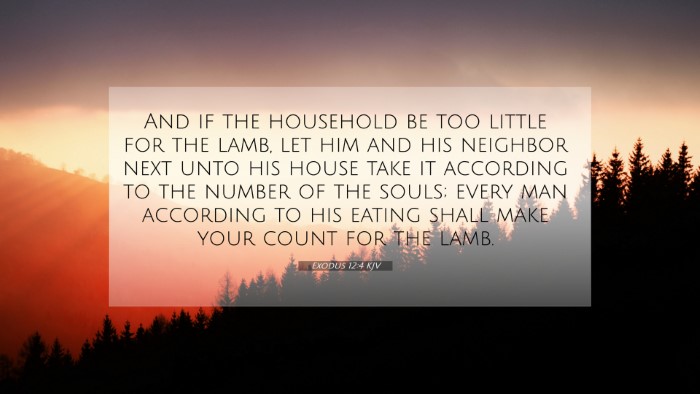Understanding Exodus 12:4
Exodus 12:4 states: "And if the household be too little for the lamb, let him and his neighbor next unto his house take it according to the number of the souls; every man according to his eating shall make your count for the lamb." This verse is rich in implications and connects deeply with themes of communal observance and individual responsibility in the faith community.
Summary of Insights from Commentaries
The combined insights from renowned biblical scholars shed light on the multiple dimensions of this verse:
- Matthew Henry: Henry emphasizes the communal aspect of the Passover meal, indicating that the organization of households to share a lamb illustrates the importance of community in the observance of God’s commandments. Each family, or cluster of families, had a share in the sacrifice, representing unity in faith and worship.
- Albert Barnes: Barnes highlights the logistical details, noting that God’s commandments were given with an understanding of practicality and human condition. The directive to share the lamb ensures that no one is excluded, reflecting God's desire for inclusivity among His people.
- Adam Clarke: Clarke's commentary points out the spiritual significance of the lamb as a sacrifice, representing Christ in the New Testament. He discusses how the communal sharing of the lamb foreshadows the fellowship of believers in Christ's sacrifice, thereby establishing a deeper inter-Biblical dialogue between the Old and New Testaments.
Thematic Connections Between Bible Verses
Exodus 12:4 can be linked to several other verses that enhance its meaning:
- John 1:29: "Behold the Lamb of God, which taketh away the sin of the world." This verse identifies Jesus as the ultimate lamb, aligning with the theme of sacrifice present in Exodus 12.
- 1 Corinthians 5:7: "For even Christ our passover is sacrificed for us." This highlights the direct connection to Passover and reinforces the significance of Christ's sacrifice for believers.
- Hebrews 9:12: "Neither by the blood of goats and calves, but by his own blood he entered in once into the holy place, having obtained eternal redemption for us." This verse outlines the finality of Christ’s sacrifice, paralleling the temporary relief offered by the Passover lamb.
- Exodus 12:3: The command for each household to take a lamb establishes the role of individual and family in partaking in God’s covenant community.
- Matthew 26:17-19: The institution of the Last Supper reflects on the historical and cultural chain leading back to the Passover, making significant interconnections within scripture.
- Revelation 5:12: "Worthy is the Lamb that was slain." This verse emphasizes the eternal value and significance of the sacrificial lamb, connecting both Testaments in their portrayal of redemption.
- Romans 3:25: "Whom God hath set forth to be a propitiation through faith in his blood." This aligns with the theological underpinning of atonement seen in the Passover lamb's purpose.
Cross-Referencing Biblical Texts
Understanding Exodus 12:4 through cross-references exemplifies the interconnectedness of Scripture. The methodology of cross-referencing Biblical texts enriches a study of the Bible by revealing thematic continuities and evolving interpretations. Below are some pointers on how to approach this:
- Tools for Bible cross-referencing: Utilize a concordance or a Bible reference guide to find key verses that connect thematically.
- Cross-reference Bible study: Engage in systematic study to trace similar narratives, themes, or teachings across the Bible.
- Identifying connections between Old and New Testament: Make a habit of noting parallels and prophecy fulfillments as seen in cross-references.
- Comparative study of Pauline epistles: Explore how Paul further expounds on themes introduced in the Old Testament.
- Cross-referenced themes in the Bible: Develop a thematic approach to scripture, examining how principles like sacrifice, community, and redemption evolve.
Conclusion
In conclusion, Exodus 12:4 serves as a pivotal verse connecting the practices of ancient Israel with New Testament teachings. Its implications resonate with themes of community, sacrifice, and shared faith. By engaging in comparative Bible verse analysis and utilizing Bible cross-reference systems, believers can deepen their understanding of the infinite connections woven throughout the scriptures.


